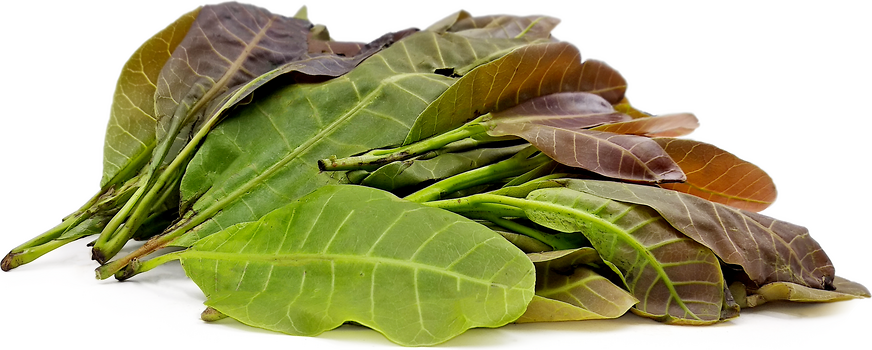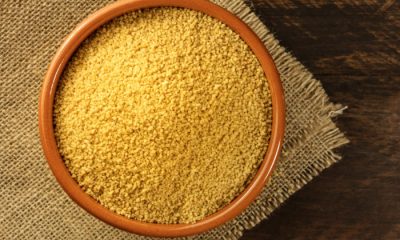Health
12 Benefits of red tea and side effects

Discover the 12 shocking health benefits of red tea and side effects.
The benefits and healing properties that consuming red tea provides for the body are synonymous with well-being and health since it is rich in antioxidants and also helps prevent certain diseases, which from its conscious consumption will regulate the immune system.
Red tea is not very popular in the East, but Western culture considers it a long-lived elixir due to its favorable properties for the body.
This tea is part of traditional Chinese medicine, it is a healthy tradition for the prevention and treatment of multiple diseases.
What is red tea?
Red tea leaves originate from Yunnan province, China.
For its production, the tea leaves are dried and rolled, followed by the fermentation process and microbial oxidation.
Long storage and unique fermentation of red tea or Pu-erh (also known as that) enhance its flavor and enrich the flavor.
Therefore, before buying this tea, you have to take into account the verification of the origin, the processing method, and the storage information, as it can make a difference in the color, the taste of the red tea.
History of red tea
High in the mountains of Yunnan, China, in an area believed to have been the birthplace of tea some 4,700 years ago, are groves of ancient tea trees.
These trees, some of which are 1200 years old, flourish naturally in unspoiled temperate conditions.
They are mainly cared for and harvested by two Chinese minority ethnic groups, Dai and the Aini.
Dai and Aini harvest a large-leaved version of the tea tree, Camellia sinensis var. assamica) native to the southwestern region of Yunnan China (Yunnan Dayeh).
The high quality of red tea is coveted and hoarded by tea connoisseurs in China and Asia.
Relatively small quantities of red tea are left to be shipped to tea lovers in the West.
Red tea is an undiscovered secret treasure for many outside of Asia.
The red tea or also called Pu-erh is named after a city called Pu-erh located in the center of Yunnan.
There, all the teas produced from the nearby mountains were marketed.
To facilitate transportation, the teas were compressed into cakes or bricks and transported to different parts of China and Asia by horse caravan.
Later, all the teas marketed in this city came to be known as Pu-erh tea.
Properties of red tea
The latest research shows the effectiveness of this tea to reduce cholesterol, triglycerides, and sugars in the blood, to counteract hypertension, overweight and aging, and facilitate digestion by regulating the intestinal bacterial flora.
It counteracts stomach acid and has a positive effect in cases of gastroesophageal reflux.
It is considered the blood eliminator because it helps eliminate toxins that are assimilated with food.
It has been confirmed to have significant anti-sclerotic properties that reduce the risk of dangerous atherosclerotic plaque formation and it also has strong effects. antifibrotic.
Red tea acts as an anticancer agent and, in the same way, it can be of great help as a regulator of body weight, especially if it is inserted simultaneously with a diet rich in vegetable fibers and flanked by a regular physical exercise program.
Main components of red tea
It can be affirmed that Pu-erh tea has significant healing and protective properties accentuated throughout the gastrointestinal tract due to the microorganisms and the processed catechins (antioxidants) contained in it.
The main organic components of red tea are flavonoids and more precisely catechins and their derivatives. The most important are:
◦ Epigallocatechin gallate (EGCG).
◦ Gallic acid (GA).
◦ Epicatechin (EC).
◦ Galocatequina (GC).
◦ Epigallocatechin (EGCG).
◦ Gallocatechin gallate (GCG).
◦ Epicatechin gallate (ECG).
◦ Quercetin.
◦ Kaempferol.
◦ Myricetin.
◦ Proanthocyanidins.
◦ theobromine.
All of them are very powerful antioxidants with countless beneficial and protective properties.
For these reasons, you should take advantage of all the beneficial properties of this tea, and, in synergy, it can help you lose weight.
It facilitates digestion to reduce the risk of cancer, keep cholesterol and blood glucose levels under control, and help us keep our cardiovascular system safe against the risks of heart attack and stroke.
That is why it is important if you have the possibility of including red tea in a daily diet, it would be helping our body and immune system to keep us healthy and protect us from external attacks by viruses, bacteria, and pollutants.
Health Benefits of red tea for the body
The health benefits of red tea for the body are used by many people to combat and prevent some common ills that can be generated since this is a stimulant of the immune system, therefore, it helps to prevent the appearance of colds, colds, weakness among other
1.- Improves oxidation
Red tea contains antioxidants, which can help prevent free radical damage. Left unchecked, free radicals can lead to disease.
2.- Antibacterial action
The antibacterial properties can help protect the body from harmful bacteria, it can also be used topically to help treat mild illnesses caused by bacteria such as acne.
3.- It is anti-inflammatory
The anti-inflammatory properties of red tea can help relieve redness, swelling, and other irritations.
They can also relieve pain caused by inflammatory conditions, such as arthritis.
You can apply red tea topically to treat inflamed skin or drink a cup or two to help the body heal from the inside out.
4.-It can help prevent photoaging.
The action of red tea can even help protect the skin from photoaging or signs of aging caused by sun damage.
For many, drinking a few cups of red tea has become part of a skincare routine that already includes scrubs, moisturizers, and sunscreen. Red tea can also be used to make a facial toner.
5.- It can help reduce body toxins.
Red tea can help break down and eliminate toxins from the body.
This includes toxins known to contribute to weight gain.
You can consume red tea when you want to have a cleansing and detoxifying effect on the body.
6.- Helps indigestion.
A cup of red tea may be exactly what you need to improve digestion and ease stomach ailments.
It has been shown to help balance bacteria in the stomach and intestines and help the body digest heavy meals.
7.- It can help reduce stress.
Red tea can help reduce stress by regulating and protecting the nervous system.
The gamma-aminobutyric acid (GABA) found in it has also been shown to reduce anxiety levels, so it can relax and absorb stress.
8.- Improve the quality of sleep.
Although red tea contains caffeine, it can help improve the quality of your sleep.
Due to its effects on anxiety, it is believed that it can help calm the mind so that you can walk away peacefully.
It is also said to promote the production of melatonin, which can help regulate your sleep.
9.- It can help lower cholesterol.
Not only can red tea help lower cholesterol levels, as its protective benefits can also help improve your overall cardiovascular health.
10.- It can help alleviate the symptoms of metabolic syndrome.
Drinking red tea regularly can help ease the symptoms of metabolic syndrome.
It has been shown to lower blood sugar, reduce obesity, and boost immunity.
In addition, it reduces cholesterol and prevents free radical damage.
11.- Control blood sugar.
This powerful control of the presence of sugar in the blood is especially important if you already have diabetes or want to prevent
12.- It can help with weight loss.
Red tea helps promote weight loss, and it can be a great substitute for sugary drinks.
How to prepare red tea
When you want to make red tea at home, you generally require 3 to 4 grams of tea leaves per cup of water.
You can adjust this amount depending on how strong you would like your tea.
Once the leaves are obtained, the following steps are performed:
- Place the red tea leaves in the strainer of a teapot.
- Pour the freshly boiled water into the pot and it should turn a bit.
- This water is discarded to remove any impurities from the tea.
- Fill the kettle with more boiled water and let the tea steep for three to four minutes.
- Now to have your tea and enjoy it!
You can reuse the tea leaves a couple of times.
Note: Red tea generally contains 60 to 70 milligrams of caffeine per cup.
Be aware that most of the caffeine will come out in the first water.
If you decide to make a second or third pot with the same leaves, the tea will contain less caffeine.
Possible side effects of red tea
Red tea is generally considered safe to consume.
Most people can safely drink up to 5 cups per day without experiencing any side effects.
Most of the potential side effects and interactions of tea are due to its caffeine content.
With this in mind, pregnant or lactating women should be able to safely drink up to 2 cups per day.
Children can also consume red tea in small amounts.
Health
Managing Chronic Pain: Integrative Techniques for Wellness

Key Takeaways
- Understanding chronic pain and its various treatment options is essential for effective management.
- Lifestyle factors, including diet, exercise, and sleep, can significantly influence chronic pain.
- Integrative techniques, including medical treatments and complementary therapies, are vital in tackling pain holistically.
Understanding Chronic Pain
Chronic pain is a persistent type of pain that can last for months or years and may be caused by various factors. In contrast to acute pain, it can continue even after the original injury has healed. Healthcare professionals evaluate a patient’s self-reported pain level and the impact it has on their daily activities to address the complexity of chronic pain. When the underlying cause is unknown, multidisciplinary approaches are necessary to relieve pain.
The Role of Lifestyle in Chronic Pain Management
In the quest for relief, many find solace in discovering a reputable pain clinic near me that employs a range of treatment options. Diet and chronic pain have a significant, if not entirely understood, relationship. Pro-inflammatory foods, excessive caffeine, alcohol, and refined sugars tend to exacerbate inflammation, potentially intensifying pain. On the other hand, anti-inflammatory foods such as fatty fish, greens, nuts, and seeds may help reduce inflammation and, as a result, pain. Consistent hydration and balanced meals can support the body’s natural coping mechanisms. Creating a personalized diet plan with a nutritionist or dietician can be a proactive step in managing chronic pain through lifestyle. Being physically active is critical to managing chronic pain.
Medical Treatments for Chronic Pain Relief
Medications often serve as the first line of defense in chronic pain management. NSAIDs, for example, are commonly used to alleviate inflammation and pain. Antidepressants and anticonvulsants can also be prescribed for their pain-relieving properties. Caution must be taken, especially with more robust, potentially habit-forming medications such as opioids; these should only be used when necessary and with a strict plan for monitoring and tapering. Furthermore, patients are encouraged to ask their healthcare providers about potential side effects and interactions with other medications.
Beyond pharmacological measures, interventional treatments like nerve blocks, epidural steroid injections, and radiofrequency ablation offer non-surgical pain relief for various conditions. In some cases, these targeted procedures may provide lengthy periods of relief and help patients engage in physical therapy and rehabilitation more effectively.
With chronic pain being such a dynamic and individualized issue, research into new therapeutic methods is ongoing. Treatments such as platelet-rich plasma therapy (PRP) and stem cell injections are emerging as potential alternatives. They focus on repairing damaged tissues and reducing pain naturally. However, consulting with experienced pain management specialists before considering these advanced options is essential.
Psychological Approaches to Pain Management
Chronic pain has deep psychological and emotional roots in addition to physical causes. Therapies like Cognitive Behavioral Therapy (CBT) address the thought patterns that can worsen pain perception and decrease the quality of life. Patients can learn to change these thoughts, engage in positive behaviors, and develop strategies to manage setbacks in their pain journey. Biofeedback is a technique that measures and provides real-time data on bodily functions, such as heart rate, muscle tension, and skin temperature. It helps patients gain voluntary control over these functions, and mastering such autonomic processes can improve pain management and give a greater sense of personal power.
Emotional well-being is integral to pain management, as negative emotions can intensify pain perception. Healthcare providers may recommend therapy sessions to address the psychological impacts of chronic pain, helping individuals cope with associated feelings of frustration, depression, or isolation. These therapeutic approaches highlight the importance of treating chronic pain as a comprehensive, biopsychosocial condition.
Navigating the Healthcare System
The complexity of healthcare systems can add a layer of stress for those managing chronic pain. Advocacy is critical. Patients must feel empowered to ask questions and make informed decisions regarding their care. Understanding how health insurance works, what treatments are covered, and how to access necessary medications is imperative. Healthcare professionals can also be invaluable allies in helping patients navigate these systems and ensure that they receive appropriate and timely care.
Looking Ahead: The Future of Pain Management
As we learn more about pain, there is hope for better pain management through new treatments and technologies. For example, virtual reality therapies can help distract patients from pain and reduce its intensity by immersing them in relaxing environments. Scientists are also exploring innovations in pharmaceuticals, non-invasive brain stimulation techniques, and cognitive behavioral therapy apps to treat chronic pain more effectively. Additionally, personalized medicine, which considers an individual’s genetic makeup, lifestyle, and environmental factors, is set to revolutionize pain management.
Health
21 shocking health benefits of green grape

Table of Contents
Health
7 health benefits of cashew leaves and side effects

Table of Contents
-

 Food2 months ago
Food2 months ago8 shocking benefits of leek juice and side effects
-

 Food1 month ago
Food1 month ago10 + Benefits of carrot juice and side effects
-

 Health1 month ago
Health1 month agoBenefits of guava leaves Sensually
-

 Health2 months ago
Health2 months ago10 shocking health benefits of Canary seed milk
-
Weight Loss1 month ago
Chrissy Metz Weight Loss Secret (2022)
-

 Health1 month ago
Health1 month ago7 health benefits of cashew leaves and side effects
-

 Weight Loss1 month ago
Weight Loss1 month agoKelly Osbourne weight loss 2022
-

 Food2 months ago
Food2 months agoHealth benefits of gongolili or vetiver and side effects










